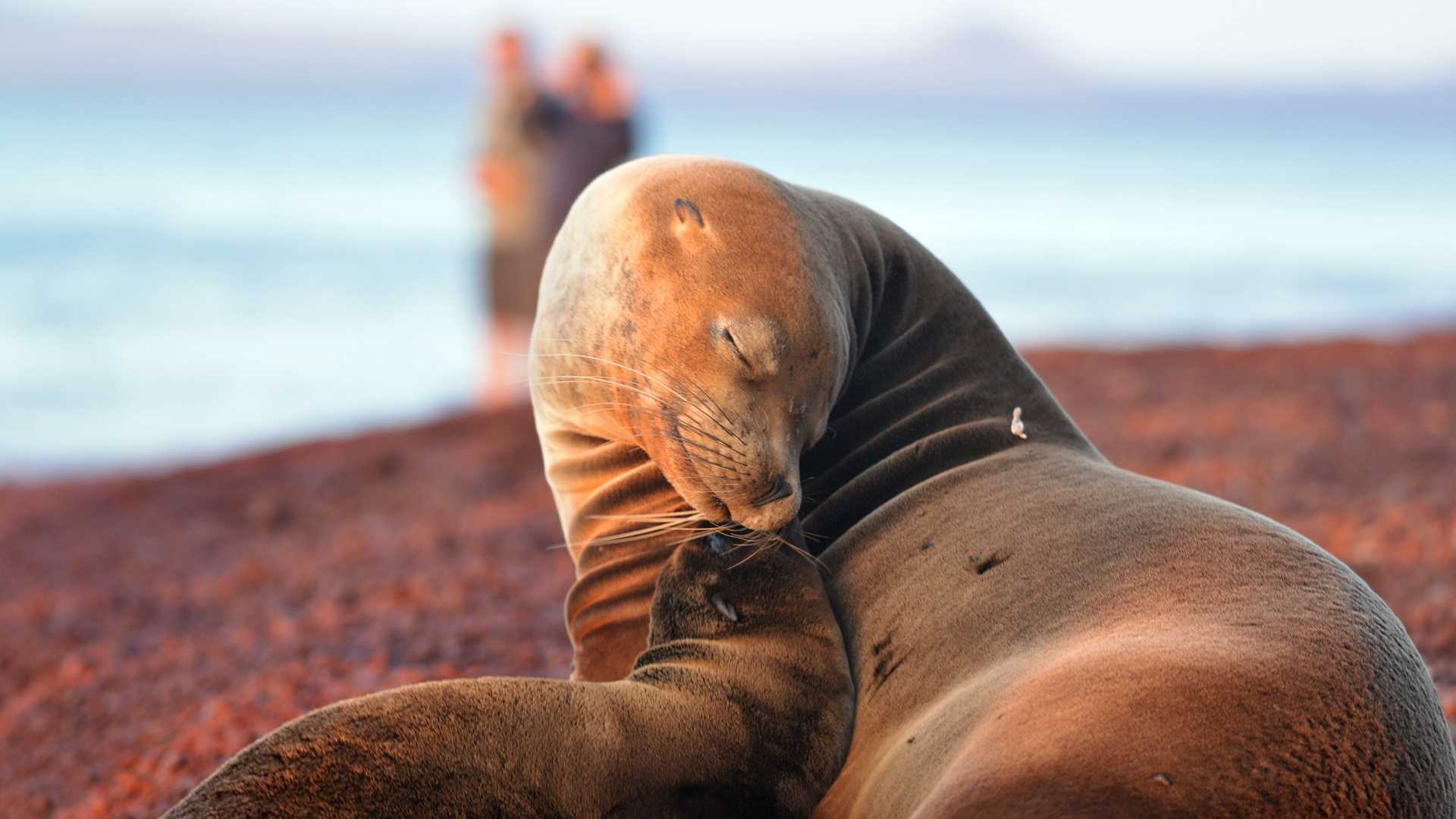Two of the most interesting islands that will surely fascinate you, not only because of their unique fauna, but also because of their interesting geological past, are North Seymour and Rabida. Unusually for the Galapagos Islands, North Seymour Island wasn’t a volcano. Instead, it was formed by the uplifting of flat seabed and emerging above the sea millions of years ago. Even today, it is possible to see evidence of shells and the exoskeletons of corals that used to be underneath the ocean. Rabida, on the other hand, emerged from an underwater volcano, so the entire island looks reddish because of its lava. Rich in iron and magnesium, it was oxidized by the salty environment, creating a rich red coloring. Over time, the lava rocks erode into the red sand that we see today.
With great weather and completely calm seas, early this morning we boarded Zodiacs towards North Seymour. In the distance it looked completely dry, with many birds gliding in the air like real kites. We appreciated its unique flat topography without hills or mountains, similar to South Seymour (or Baltra, her sister island). We walked along the path covered by deciduous vegetation, such as palo santo and muyuyu trees. Inland, we found the first colony of magnificent frigatebirds perched on the tops of the trees and some bushes. Some were nesting, while others, like the males, tried to conquer a mate that was flying over the area, producing an unmistakable sound while beating their wings vertically and swinging their heads from side to side. We also observed many juvenile frigatebirds and other chicks eagerly waiting to be fed by their parents. All the while, below on the rocky ground, many juvenile blue-footed boobies flapped theirs wings and hardened their muscles, which in a few days would help them take off and begin their flight, beginning a new period in their lives. Now they were independent, without the help of their parents. Not far from them, we found some land iguanas resting placidly on the rocks after feeding on cacti or some other succulent plant.
At 10:30 am National Geographic Islander II started to navigate northwest, bound for the island of Rábida. After a calm navigation, we dropped anchor and then began our activities landing on the red beach, which was covered with sea lions that slept placentally, without caring about our presence. Our guests were able to enjoy the calm waters of the Rábida Bay, swimming, and snorkeling, observing a huge school of sardines and in the deepest part, and another even larger school of black-stripped salemas. The schools of fish were so large that, from the surface, they resembled an immense rock underwater. But probably the one that caught our guests' attention the most was a male sea lion that constantly barked and swam very close to us. Finally, our guests returned on the beach to photograph pelicans and blue-footed boobies that were in a feeding frenzy while at the end of the beach, while sea lions delighted our guests. We observed many female sea lions nursing their babies, and beside them some males watched us curiously. With the last rays of sun, we returned on board, thinking about the unique creatures we observed today and the memories that will remain with us forever







